The Real Market With Chris Rising – Ep. 44 Sara Neff
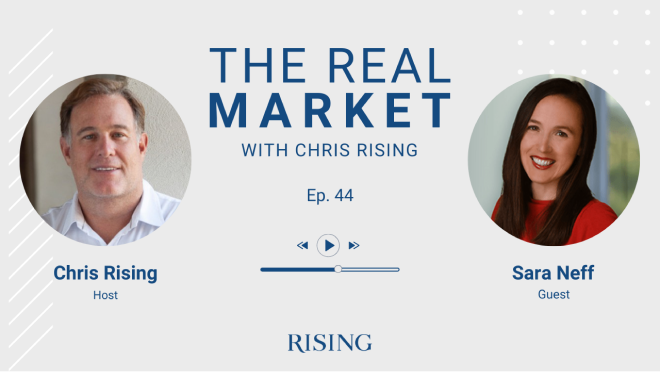
Chris Rising (00:02): Welcome to The Real Market with Chris Rising, the only podcast that brings the real estate conference panel to your headphones. You’ll hear from superstars from every realm of commercial real estate, the biggest brokers, the most well known architects, the largest investors, and the most visionary developers. And learn what they do, how they do it, and what drives their success. We’ll discuss the latest trends across regional markets, capital flows, both national and global, and we’ll explore technology’s role in shaping all of them. We’ll take a clear-eyed look at where we’ve been, where we are now, and what’s to come. Real conversation, real experts, real insights. This is The Real Market.
Chris Rising (00:50): Welcome to The Real Market with Chris Rising. I’m really, really excited to have Sara Neff with me today. Sara is a Senior Vice President of Sustainability at Kilroy Realty, which is a public REIT that’s based between Seattle and San Francisco and Southern California. And Sara has been a leader for the last 10 years in driving a platform for sustainability at Kilroy. She does a lot of speaking, she’s a TEDx speaker. She’s on the board of directors of the USGBC-LA and she is a leader in our industry. It’s a really interesting conversation about what the world’s going to be like post-COVID, how we come back, how buildings are going to operate, but also, longterm, what’s going to happen with office and commercial buildings. So, I think you’re really going to enjoy it.
Sara Neff (01:32): Thank you so much for having me. I’m very excited to be here.
Chris Rising (01:36): Well, who knew, when we first had lunch and started talking about some of this stuff, that we would be sitting here on April 27th? And I would think that health and wellness is pretty much on everybody’s mind as we start to talk about reopening the economy and such. I bet you’re in great demand these days.
Sara Neff (01:54): Yes. It’s been very interesting. There was a moment right when this all started, where we all thought, “Oh, my goodness, nobody’s going to care about the climate anymore, everything’s going to be on pause.” And then, about 30 seconds later, we all said, “Wait a minute, where are the people at our companies who best understand health and wellness?” Maybe we’re about to become very relevant, and that’s definitely what’s happened. So, it’s been great. I’m glad we started our health programs about five years ago, so, we’ve had some time to get to know, not just sort of the features that you put in a building to make it healthier, but also how to communicate that to tenants in a way that doesn’t open up a lot of liability. So, there’s a lot in there and it’s really actually exciting that people are starting to make the connection now, even though it’s under the worst possible circumstances.
Chris Rising (02:40): That’s right. And it’s amazing how, I think, a few months ago, people didn’t really connect health and wellness with climate change or some of the sustainability efforts before, health and wellness was just to the side. But if you really look at what it means to have a sustainable office project or a multifamily project, or just live a sustainable life, health and wellness are front and center.
Sara Neff (03:02): Oh, yeah.
Chris Rising (03:03): And it’s just, I have to imagine that now, it’s just going to change the tone when we come out of this. But, can you talk a little bit about what originally drew Kilroy to sustainability and drew you to John’s company and the people there, and then what’s happened over the last six weeks that makes the role even more important?
Sara Neff (03:24): Sure. Absolutely. I started at Kilroy back in 2010, hard to believe, and what had been happening was that the Green Building Movement was starting to pick up some steam, and the company had noticed that it had a few LEED projects, and that those buildings did a great job leasing and gotten a lot of press, and they thought, “Goodness, we should be doing more of this.” The board of directors had been grumbling that we really needed a sustainability person, and John himself is an environmentalist. And it’s not a word I toss around lightly, I think a lot of that is because he loves sailing, he’s on the water, when he sees trash, it’s just really very frustrating for him.
Sara Neff (04:06): And so, when the board of directors made a suggestion that they take on a full-time person, he agreed, and then I happened to be in the right place at the right time and started the company as their first director of sustainability. So, there wasn’t anyone before me. My focus had been entirely environmental for about my first five and a half years at Kilroy, energy, water, waste diversion, electric vehicle charging, that kind of thing. And then, our health programs really launched back in ’15, when the studies first started coming out, connecting air quality with cognitive function, and sickness and productivity, and that work has only grown. And then, over these last six weeks, I have been focused on how we’re going to adapt our about five million-ish square foot development pipeline, to a post-coronavirus world. So, that has been the primary thing that I’ve been focusing on over these last six weeks.
Chris Rising (05:07): Well, I think you’ve probably jumped up on importance when the team gets together on who they want to hear from first.
Sara Neff (05:13): Yes. It’s been really interesting. I mean, the thing that always drives this home for me about the connection between buildings and health and wellness is that it is not an intuitive connection. We think of our offices as places we go, we do our work, we’re with our teams, we know it’s important that they help us collaborate and hopefully they’re conveniently located and we want our chairs to be comfy, but we don’t think of it as something that’s really impacting our bodies. We don’t think that way about our homes. When I think about what makes me healthy, I think about the food that I eat, I think about how much I exercise, if I have any genetic factors for illness, that kind of thing. But I don’t really think about my buildings.
Sara Neff (05:51): And this really got driven home for me a couple of years ago when my then two-year-old developed asthma, and she’s coughing herself to sleep every night. And Chris, I know you have kids and it’s just so horrible when you’re a parent and you’re helpless because your kids are suffering, you can’t do anything about it. And when she finally got this, we’re talking all these breathing treatments and steroids, and those aren’t working, and believe me, convincing a two-year-old to wear a breathing mask twice a day is no fun. And then it was finally when she got the official diagnosis of asthma, that only then did I make the connection between the fact that my house is downwind of the 10. You can’t hear the traffic but it’s there, and got an air filter that I’d learned about through a health building certification at work, and the problem was gone in two days.
Chris Rising (06:36): That is amazing.
Sara Neff (06:37): It is amazing. But it’s a horrible story because it sounds like it’s a happy ending, but it is not a happy ending because I do this for a living. We’d been doing work in health and buildings and trying to make that connection for people for a couple of years when this all happened, and I didn’t make the connection at home, even though, me, the person who should be the most able to say, “Hmm, coughing, I wonder if that’s something environmental,” wasn’t able to do it. So, I totally empathize with the fact that this is not something we think about when we think of our buildings. We don’t think of energy particularly either, and the environment with our buildings, we think of polluting factories and cars. We don’t think about buildings either. So, yeah, it’s a hard thing to change how the human brain views this kind of thing.
Chris Rising (07:20): Well, what’s I think really interesting about that is, a few months ago, I’d be talking to private equity firms, and they would say things like, “Oh, I’d like to know about this, what’s this ESG stuff all these European funds are talking about? What’s this ESG?” And I would try to explain over and over again that, I don’t really, we can go through different definitions on ESG and all that, but what we focus on is impact. Impact means that we care about how efficient our buildings are, how healthy they are, how much they allow people to be productive, how much access in natural light. And as I started to go, you could see their eyes would glaze over because they just wanted some simple answer to what ESG was.
Chris Rising (07:55): And I think what we’ve shown here is that, it’s not a simple answer, it’s how we live our lives every day and how companies are going to think about it. And we’ve got a whole host of things I want to go through, but just, can you talk about how you see the difference between ESG and the world we are living in now, and what ESG, translated, really means?
Sara Neff (08:18): Right. Well, ESG, I think, really means the concept that there are impacts, other than financial, of the decisions we make with our money. So, every time a dollar is spent or a program is launched, there are environmental impacts, there are social impacts, as well as financial impacts. And that’s at the individual project level, and the company level, and the market level, and the economy level. I mean, essentially, that’s what it is, is that there are not just financial consequences to the things that we do.
Sara Neff (08:48): And so, European investors especially, but I actually give a lot of credit to the Australian investors, those actually are the ones who I think push me the most or the ones from down under, but they have been recognizing for a long time that companies, and especially real estate companies, I mean, studies show there were somewhere between 25% and 40% of global climate emissions come from buildings, that they can really influence environmental decisions if they influence real estate. And so, that’s really what they’re getting at. They say, “Well, I don’t want to invest in a company, even if it is very financially successful, if what it does is going to be negatively impacting the environment.” And that’s what they’ve done.
Sara Neff (09:27): So, that’s really what it is, it’s, what are the environmental, social and the governance side, which is what the G in ESG stands for, is a little bit not so much an impact, I think that’s just getting more towards overall management quality, and also liability. So, a company might be doing great on the books, but if it’s WorldCom, or, it’s not maybe the best investment. So, if you don’t have good governance, ultimately, it’s not a great investment. And there’s also this concept… Sorry, of an environmental… Sorry, I’ll just, so we’re not overlapping each other.
Sara Neff (09:59): There’s also this concept of permission to operate. If your company internally looks really great but all your constituents hate you because you’re not being environmentally or socially responsible or there’s a lot of corruption or bribery, then you’re just not going to be able to execute your projects. I think that’s the other thing that investors, especially European investors are trying to get at, which is, you look at Volkswagen and there was clearly governance issues there, and now, those, the investments in Volkswagen did not pay off. That’s one of the things that they’re trying to get at.
Chris Rising (10:33): That makes a lot of sense. Well, let me ask you this, speaking of investments and things, and there’s a lot of talk right now about when we go back to the world, we’ll work from home takeover and that’ll just make it easier for people and the office buildings won’t exist or people won’t use offices. There’s a whole lot of different themes around this. But, what’s your take? Because, I think, before we get into whether a building’s efficient or not, we have to ask ourselves whether they’re going to be occupied.
Sara Neff (10:57): I think buildings will be occupied. I think they’ll be occupied differently, and it’s not clear how long those differences will last. I mean, I was on a webinar last week with someone from Shanghai, who to us is like a time traveler from three months in the future. And he said, ah, he will just go right back to their old habits as soon as you let them. There were shifts, but they didn’t fundamentally last that long. So, that may be what happens here. I think we’re going to see more shift work. We’re going to see people staggered throughout the day, and staggered throughout a week. I think that’s likely. I think there are certain people who will find that they prefer working remotely and they may stay that way.
Sara Neff (11:32): Ultimately, flexible work is great, although a lot of studies show that those who work from home, especially women, those contributions are not as valued. So, I think that there are trade-offs with remaining in a work from home situation, obviously, great for traffic and the environment not to have a lot of emissions from commuting. So, we’re definitely going to be seeing changes, but I’m not sure how many of them are going to be these crazy things that are being suggested like everybody can only walk around an office counter-clockwise, so that way, you never run past each other. I don’t see sort of that stuff lasting.
Chris Rising (12:09): I don’t know how the six-foot distance works either in an office building or walking down the street. So, I think we’re going to have to find some accommodations and all that. But let’s talk about, your buildings are so well prepared, thanks to all the work that you’ve done, and I’d like to think ours are well prepared too. But, that first day back, for most people, is going to be a scary thing. And what is Kilroy doing? What are you all doing to try to make that first day back more pleasant for people? And what’s some of the low-hanging fruit? And then, what are some of the more difficult things to adjust to, in this new world we’re in?
Sara Neff (12:47): Right. I think there’re two things to be thinking about. One is, what are the actual changes you’re making to the, either the physical nature of the building or the operations, to make it more pandemic prepared? And then, B, is how you’re communicating that. So, you can do all the stuff but it’s not, all to give an example of, say you’ve decided, which I’m not saying I recommend, but say you’ve decided to run the ventilation 24/7 to try to change the air at work, well, a tenant coming in isn’t going to see that, they don’t get that that’s happened, and so, unless you’re communicating that, you might be making it healthier, but it’s not going to help a tenant feel any more secure. So, there’s those two aspects of things.
Sara Neff (13:27): I think the important thing right now is just to make sure there’s a lot of misinformation out there right now, there’s a lot of strange, unproven, expensive technology that’s trying to be thrown at this problem. There’s, every single technology company’s trying to rebrand is the thing you need in order to be coronavirus ready. And so, I think it’s important to look at the whole giant body of scientific evidence as to what can actually prevent disease transmission in a building, and then really work on communications. I think those things need to be really proactive. A good example is signage.
Sara Neff (14:03): I think tenants are going to expect a lot more signage reminding them about hand-washing, they’re going to expect things like more open stairwells so that people don’t get crowded at the elevator, the ability to, what does the valet person look like? Or do they have PPE on, the personal protective equipment? Otherwise, some random person’s getting your car and could get you sick later. So, I think it’s all those visual things that are really important, while you’re doing the stuff that the science really says is important. And a lot of that, honestly, is, I mean, we want to feel like we want this sort of magic bullet, but a lot of it is making sure people are washing their hands, really working to not get people into the building if they are feeling unwell, and also trying to protect your tenants, trying to figure out, for example, with retail, how do you make it super easy for people to pick up takeout from a restaurant?
Sara Neff (14:57): Because, we obviously want those, we want the tenants to stay in our building and be ready for a time when people can come back and use restaurants. So, those are the kinds of things that we’re working on, both of what to do that actually makes sense, and then how to communicate it. The other thing is, obviously, we’re very quickly going to get into privacy issues. For example, the gentleman from Shanghai I was on that webinar with, had said, for his office building, he can’t get into it without, there’s an app on your phone that basically says if you’ve had a fever that day, and unless that QR code is green, you’re not getting in. And a lot of establishments in a lot of retail establishments have established that, shopping, restaurants, as well as office, and so, we might be seeing something like that.
Sara Neff (15:38): Obviously, we’d really quickly get into privacy issues, so, you’ve to be quite careful. But that, I think, may, tenant, certain tenants are going to want to request that. The other thing that I’m seeing is just a vast difference between multitenant buildings and single tenant buildings. A single tenant building, those folks are in charge of themselves, they have control over who is and isn’t in the building. I think the real issues are going to be in our multitenant assets, where a tenant is going to worry that someone else is being less careful than they are, and allowing people who have not been taking precautions into the building.
Chris Rising (16:11): I know our security people are already petrified about the first sneeze that happens if someone’s coming into a building, how are people going to react? But you’ve raised a lot of issues. There’s a wonderful piece on the Gensler website about what the experience is, I think it was in Hong Kong, maybe it was Shanghai, but that talks about these red, yellow, and green, from the iPhone, whether you had a fever or not. We had a call today internally, and one of the things we were saying, “Okay, let’s say we use thermometers for people as they come in, and somebody argues with us, and says, ‘I don’t have a fever.’ I mean, let’s say they do have a fever, there’s no portal set up by the County of L.A. that we would report that someone has a fever.” So, it does feel like we’re in a lot of flux as we come back.
Chris Rising (16:55): But the buildings that are most prepared for this, all of the Kilroy product that I know is prepared for this, and ours is, too, it’s just, what are your procedures in place to have people flow through, although it’s contactless entry and contactless, not having to touch buttons, what do you think are just some of the primary things that will be different about entering a building, whether it’s with thermal thermometers or not, but just, how do you think that our experience of going to buildings is going to change? Will we give up our privacy and just, boom, everything is contactless, you go right to your floor? Or, do you think there’s a lot of steps in between?
Sara Neff (17:39): That is a development issue that I’m really working on right now. I would say, touchless elevators are pretty attractive. They’re not very widespread in the U.S., there are some in Japan, but we have destination dispatch where you’re still touching the keypads. So, is there some way to make that a touchless experience either through your phone, or through some sort of a key card, or through some sort of film that you’re putting on top of the elevator keypad that you’re able to change out very often? Not clear. I think the experience is going to be, hopefully, your building is going to feel a little emptier, because people are staggered throughout the day. There will be a whole lot more hygiene stations throughout the building.
Sara Neff (18:27): I think we’re going to feel weird going into the bathroom for a little bit, because of, we’re going to be concerned with how many people are in there, and making sure that there’s not too many. I think people are going to be opening doors with their elbows for quite a long time. But hopefully, also the message that’s being communicated is, “We’re so happy you’re back. We hope you’ve been healthy, we hope your family and loved ones are healthy. We are here to do our best to make you better.” And the other thing we may start seeing is, “Here’s a certification from whatever body, that says, I have taken all reasonable precautions.” So, we might see stuff like that pop-up, where there is not just, “Oh, take my word for it.” But, “No, no, this third party said that I did everything and I paid extra to make sure that that got checked and that my chemicals were checked and how often I was cleaning my high-touch services got checked.” We might see that.
Sara Neff (19:23): And there’s other things down the road, there’s, naturally, antimicrobial surfaces. Copper is not an unknown substance, but it is, naturally, anti-microbial. We might see more door handles with that. There are things coming down the road, but I think, first day back, we’re going to see less people, hopefully more welcoming signage, and then more protections throughout the building.
Chris Rising (19:43): I think all of those things make a lot of sense. I think one of the things that’s, I think, it’s going to jump out to us, that we have to do is, we have to be able to communicate as a society more, people have to be able to talk to each other more, and be more accommodative, because this is not going to work, a reentry is not going to work if we have a bunch of rebels out there who just decide, “I’m going to do it my way. I’m going to push through.” But I do think there’s a certain thing about confidence and feeling comfortable, that I think a lot of third parties will be important. We’re working with Gensler and some of our other architectural firms to work with the tenants about how they space out their space. I mean, the mass densification that even my firm went towards.
Chris Rising (20:21): We’re though saying, “Okay, we still want an open office, but we want to space people out. One of our projects, the trust where our headquarters is, has operable windows, we’ll open those up. We’re working with people like Healthy Buildings to give that kind of certification.” I think there will be, just like with our food products, where we look at our food and we know what we’re eating, what’s coming out, I think that’s what it’s going to happen in a lot of our commercial buildings, where people are just going to demand that they understand more about happening in a building. And you all did, I mean, just, quite honestly, I think Kilroy has been a leader in this kind of thing. Can you talk a little bit about what sustainability means, separate and apart from just health and wellness and making someone feel safe, but what does sustainability mean in your mind, that you’ve spent the last 10 years working on at Kilroy?
Sara Neff (21:09): Sure. The nutshell of it is sustainability is all the things that we do to reduce the environmental footprint of our buildings, while simultaneously increasing social benefits to all of our stakeholders, employees, tenants, investors, community members, everybody. And so, that is what sustainability is. It breaks down pretty quickly to, on the environmental side, it’s the energy, water, waste, EV charging, carbon work, both through existing portfolio, and then all of that for the development portfolio. For example, we’ve committed to achieving carbon-neutral operations by the end of this year, which we are on track to do.
Sara Neff (21:54): And then, on the social side, our social programs officially started at the end of 2018, and those are focused on what happens with our tenants, what happens with our own employees, and what happens with our buildings. And so, on the building side, health is the major factor, how are we using our buildings to improve health outcomes? How do we, carefully, we can’t say, “Oh, because of this building, you’re going to be healthier.” Because, God forbid, somebody gets sick or something in a building, and they say, “But you told me I was going to be healthy if I was in this building.” It doesn’t work like that.
Sara Neff (22:27): And for us that really breaks down to active design, how can we design our buildings so that people are more active? Are they taking the stairs? Is there a gym? Do they have access to healthy snacks, public transit? Is there a walking path throughout the campus? That kind of thing. And then, also, air quality is the other half of that, because that is related to cognitive function. So, not just, is the air so bad that you’re going to get sick, but are you functioning optimally? The cognitive effects studies that came out of the Harvard School of Public Health, Dr, Joe Allen’s lab showed that it is, 100-person company with bad air, will need to hire an extra 10 people, just to make up for the cognitive issues that bad air is causing. And that’s a huge amount of investment in human capital, just because you had bad air.
Sara Neff (23:23): And I don’t know about you, but I’m of two kids, full-time job, I never get enough sleep, I don’t have 800 extra IQ points lying around, I really need to be working at my best. So, that’s our programs in a very quick nutshell. And then there’s other sort of funds stuff that we do. I love our biodiversity programs, all of our landscapes have pollinators. We’ve got a bunch of beehives. I actually used honey on, farmed off of a Kilroy roof, on my children’s oatmeal this morning. And that’s all fun, but the core of it is really, the energy, the water, and the health of the buildings.
Chris Rising (24:03): You must be very close to your discussions with potential tenants and your current tenants about the importance of all of this. It seems like we’re going to be coming out of this as a very damaged economy and things like that, do you think that people, which way is it going to go? Are people going to care even more? Or are they just not going to be able to afford to care about sustainability and some of these things?
Sara Neff (24:24): Boy, that is an excellent question, especially because, with this very strange world of coronavirus, there has actually been a lot of environmental benefits. You and I both live in Los Angeles where the sky has been so clear and so blue lately that it’s almost chilling how much better our air could be if we would all just stop driving. We’re seeing coyotes wander out in our streets because there’s fear of people scaring them off, and energies in all my buildings is down about 30%, which is impressive given that every building has, at least, a few people on site to take care of essential work.
Sara Neff (24:57): So, we are seeing major environmental benefits now, but those will all melt away unless we take steps now to lock those in, which is quite difficult to do. Are people biking more now? And we’ll find more ways to bike. Right now, what I’m spending my time doing is trying to get a lot of exterior retrofits done both in the irrigation and in lighting, done now while I’m not going to bother anybody’s parking, to hopefully lock in some of these savings while we’re gone. On the macro level, we’re really seeing, because of this simultaneous oil crisis that we’re having, that renewables are just doing better and better. Basically, in Europe, the transition to a clean economy has accelerated as a result of this crisis. Everybody’s generation is falling because there’s less demand right now, but fossil fuels are falling far faster than renewables are falling, which means that renewables have more and more market share now.
Sara Neff (25:55): So, I think, on a grid level, because of the oil crisis, we’re going to see a cleaner grid at the end of this, but human behavior isn’t, I don’t think can be permanent unless people take steps now to lock in the environmental benefits we see. Maybe we’ll see less business travel as people realize, “Yeah, I didn’t really need to fly for that meeting, I could have gotten it done over Zoom.” We may see some of that. But I think a lot of it is going to be business as usual.
Chris Rising (26:23): And do you think that tenants will demand more out of the leasing process, whether it’s tours and such? Do you think landlords will be held to a higher standard, so much so that just having a low rate won’t win deals?
Sara Neff (26:40): Absolutely. I mean, we already see that. We already have tenants who won’t lease a building of ours unless it’s LEED Platinum, for example. That’s been true for many years at this point. As somebody who’s been a leader in green leasing for a long time, I’m honestly shocked that more tenants haven’t used the lease as a tool to demand better performance in their buildings. A typical lease will say that temperature is going to be 72 plus or minus two degrees, but we don’t see the same on air quality. The research has been out for years saying that if your air quality is around 550 parts per million or less, of CO2, that’s really optimal.
Sara Neff (27:20): I have no idea why tenants aren’t saying, “All right, Mr. Landlord, please give us this air.” That could be stipulated in a lease, with all these caveats around how much it’s allowed to be out of bounds, for how long of a day, that kind of thing. So, yes, I think we will be seeing a whole lot more in the lease, for tenants to protect themselves. But it’s, the lease is, I think it’s just because the environmental folks are often shy talking to legal. I mean, I’m not. And Kilroy has a great legal team that was really excited to do green leasing. But people need to see the lease as an opportunity to protect yourself.
Sara Neff (27:57): I mean, a lot of our green leasing came out of the new benchmarking legislation and we were responsible for reporting data that we didn’t technically have access to. So, our leases had to protect us and we’d force our tenants to give us the data, if we really needed it. And then a lot of things spilled out from there. So, yes, I absolutely expect savvier legal teams asking for more protections of the building, both in terms of air quality as well as features, and cleaning standards, to make sure that their people stay as healthy and productive as they can.
Chris Rising (28:31): Kilroy is a public company and it’s a REIT, so, you have a constituency that is your tenants and trying to lease space, but you also have shareholders. And what I find very different from the world I live in, which is the private equity world and LPs, shareholders have been much more vocal about the importance of these things. Do you think this crisis or just how things have evolved over the last few months is going to bring the private markets closer to the public markets in terms of the demand that buildings operate this way?
Sara Neff (29:03): I don’t think that tenants have a great understanding of the underlying financial structure behind their landlords. So, I think that tenants are going to learn to be more demanding of everybody, and they’re going to learn from their deals with the more sophisticated landlords, what to ask in their deals with the less sophisticated landlord. So, yes. But I see it definitely breaking down by tenant type. I mean, the types of tenants that you serve, similar to the types of tenants that we serve at Kilroy, are the most demanding tenants there are, so, they know how to ask for what they want. My hope is that the rest of the market learns the same lessons, the class B and the class C, and says, “We can ask this, even of not the most fancy buildings in the marketplace.”
Chris Rising (29:46): A lot of times, people ask me about this, and they think that we’re just a little fringy California real estate firm, and I’m sure you guys get some of that cynicism at times too, but the reality is, when people ask me, “Why weren’t you doing this five or 10 years ago?” And there’re some real reasons why, but the number one is clearly that the technology just wasn’t at the level it is now. Can you talk about the importance of technology for Kilroy, and what the improvements in technology has really allowed you to do?
Sara Neff (30:15): Absolutely. Real estate has, you’re right, been quite shy to adopt new technology. A lot of it is because we hold our assets for really long time and betting on the wrong horse is painful. But technology has done a bunch of things. The first thing technology did was give us visibility into our buildings. Now, some technologies did that in a more sophisticated way, some just dumped all this data out and then nobody knew what to do with it. But the first thing was visibility. And I think that’s going to be very critical as we move into this world of caring a lot more about our health. I’m specifically talking about air sensor technology, which is growing. It’s a lot better than it was two years ago, but it certainly has some room for improvement in terms of its accuracy and how often it needs to be calibrated, and how integrated it is with the building system. So, visibility is the first thing.
Sara Neff (31:04): And the second thing is actually doing something about it. And again, there’s a wide variety out there in the market. Kilroy has embraced technology for a long time. We launched the Kilroy Innovation Lab in late 2017, because I recognized that it’s really hard to do pilots with innovative companies. It’s something I was doing a lot of, that I was trying to get more institutional support for. So, I launched the lab. We’ve done a bunch of projects through it. We try to partner with really high class cleantech incubators, like the Los Angeles Cleantech Incubator. We’ve also partnered with the U.S. Green Building Council, and that’s your accelerator. There’s another one out in New York called Build Edison. And they are curating the technologies that come in front of us, and we’re really able to increase our chances of success with the technologies that we use.
Sara Neff (31:51): I think, as we move into health, we have to figure out what we’re measuring and why. For example, a lot of sensors out there, our CO2 sensors, those are, in this case, a canary in the coal mine. CO2 impacts cognitive function, but it doesn’t say if there’s coronavirus here or not. But high CO2 would indicate that your air isn’t changing maybe enough and that you’re more likely to be allowing germs to incubate. So, understanding what we’re measuring and why is going to be important. But I think deep visibility and then the ability to take action is something that can only be enabled by technology, coupled with the people who know how to use it. I mean, nobody’s learned that lesson harder than me. I get very excited about new tech, but unless my engineers are excited and engaged, nothing happens at all.
Chris Rising (32:37): That is very true. I mean, I’m just listening to you talk and it just, you are such an expert in this field, it just makes me think that you probably have spent, since you are very young in this desire to be in sustainability, but I know that’s not true. Tell us a little bit about your journey to where you are today, where you went to school and what your passions and interests were, to lead to being a leader in the area of sustainability in commercial office projects.
Sara Neff (33:05): Sure. I always thought that I wanted to do something within the general vicinity of a world savviness, and that was about as defined as it was for a long time. I’m originally from Washington, D.C., but I went to Stanford. It was during the dot-com boom, and I had this very silly sort of cognitive science, computer programming, philosophy linguistics major. And I thought at the time, I was going to be helping the world via the spread of knowledge via technology. I was 19, I didn’t have a ton of very well formed ideas at the time. And then I graduated with no idea what I wanted to do with my life. Moved to England for a while, lived in India for a while, came back, worked at a Shakespeare nonprofit.
Sara Neff (33:51): And then, as often happens when you’re young and you live in L.A., I fell into the entertainment industry and spent three actually very fun years working in television. I got to work on great shows, I worked on Arrested Development, and 24, and Simpsons, and Family Guy, and those shows, but I ultimately just got to a point where I just woke up one day and said, “How many more shows about white people in New York am I going to work on, before I die?”
Chris Rising (34:21): Or white people in Orange County, or the white people in Orange County who were real estate developers.
Sara Neff (34:24): And I did work on The O.C. I worked on The O.C. It was one of my shows when I was at Fox. That’s a great show. But I just, I was like, “This is not fulfilling at all.” And so, I just, I wasn’t happy. And someone else has had that same revelation, who I’d known from undergrad, who had left to go to business school, and now she runs sustainability at CalPERS. And so, I was like, “Well, that seems like a great idea.” Went to Columbia Business School, which has a great social enterprise program. Thought I was going to be in green tech somewhere. Most people come out and do renewable energy project finance, so, I thought that’s what I was going to do, getting the big wind and solar projects built. That’s what I’d interned in.
Sara Neff (35:13): And then I managed to get connected to John Kilroy via randomly interviewing him for a class, my second year of school, and I looked him up after I graduated, and he’s like, “Oh, yeah, I remember you, come on in, we can catch up.” And he said, “What do you want to do?” And I was talking about the intersection between finance and the environment, and he said, “Great, we have been needing somebody who does exactly that. You should work here.” And I started two weeks later, and I’ve been there ever since. So, yes, yes, John hired me directly. And it’s been fantastic. He was a true champion of this in a way that I feel like a lot of CEOs were like, “Yeah, yeah, yeah, just check the box. Please have something so I can submit it when an investor sends me a questionnaire.”
Sara Neff (35:58): But John never approached it like that. He’s always been amazing support and true believer, and gave me the runway to figure this out for the company. And so, that was my path and that’s what we’ve been doing. And every time we do something great, we say, “Great, and what’s the next thing we can do?” We’re never a rest on our laurels kind of team.
Chris Rising (36:20): I remember very distinctly, about 10 years ago and I happened to be at MPG Office Trust and selling, I think there was three buildings in Orange, or in San Diego to John, and I really got to reconnect with him at that time. But I know that, 11 years ago let’s say, this was not a big focus. It became a focus when you came on board, but the job must have evolved a lot, because I know it’s evolved just in what we do. Can you talk about how this role of a senior vice president for sustainability has evolved since the day you started to where it is today?
Sara Neff (36:56): Oh, yeah, it’s definitely evolved because the knowledge of what buildings can do and do do in terms of impact has evolved. When I started, it was very, energy, water, green cleaning. It was basically the things that the LEED rating system captured, and that was it. So, if we talked about it then, it was something that I worked on. And that was more or less it. And then things evolved from there. For example, renewables, you didn’t need to have renewables to do a LEED project, and so we didn’t have any, but then, renewables came into the portfolio, and then battery storage, and then offsite renewables that allow a company to say that it operates in a carbon-neutral way.
Sara Neff (37:43): And then, layered on top of that, about five years ago, was when the social program started. And that’s when our health programs began. And then, two years ago, we, A, started focusing more on sustainability within the, August 18, so, three years ago, on the financial side. We issued our first green bond that year, we started aligning our 10K with sustainability reporting standards such as SASB, the Sustainability Accounting Standards Board, and then, later, TCFD, the Task Force for Climate-related Financial Disclosure. It became much more investor-focused. And then the social stuff started, which was auditing our supply chains on environmental and social factors. We started that work last year. And then, most recently, now we’re really trying to focus on carbon in the construction process.
Sara Neff (38:42): Building developers have known for a long time that most of their carbon emissions come, not from how much energy their building is used, but from the carbon in the building materials. But we’ve never had a way to focus on that before, and now we do. A tool came out late last year that really gives us that visibility, so, now, that’s a major focus. But it’s not like I’m not still doing energy and water projects, trying to have there be more recycling, trying to put it more EV charging, but everything just layers on top of that, more social stuff, more health stuff, more investor stuff. And one of the things that you really know when your program has succeeded is when literally every single department at Kilroy and I worked together on various projects.
Sara Neff (39:24): We rolled out unconscious bias training for the whole company last year, and that was me and HR, and then working with finance, working with legal, working with marketing, all the asset management teams and engineering. That’s how you know your program’s really humming, is when everybody comes in knowing that this is something they focus on, and everybody knows that it’s not just, “Oh, yeah, that’s something Sara does in that corner,” but it’s something that everybody does.
Chris Rising (39:44): Where do you think the rubber meets the road, when it’s all said and done? LEED has been a metric by which people have really been graded, there’s Fitwel, there’s wellness standards, but, at the end of the day, what do you think is going to be asked of, of owners of real estate, of developers, by tenants? What’s the grade? Because people want things easy. They want to see one score and know that all these things are incorporated. I mean, that’s how it seems to me, in talking to Wall Street investors. They don’t want to go into the weeds, they want something simple. What do you think this all adds up to? And do we get to some standard, so that you really can tell the difference between those people greenwashing, doing a few things, and those people who really walk the walk and talk the talk?
Sara Neff (40:37): Yeah. In terms of what tenants and investors are asking for, I think it’s going to be primarily two things, which is, what is the carbon intensity of your buildings? Because carbon captures a lot of everything else we’re talking about. It captures your energy efficiency, it captures the energy you’re using to pump water. So, if you’re using too much water, your energy is going up. It’s going to capture other things like operations and business travel. And so, that’s what they’re going to want to know, and they’re going to have more and more sophisticated ways of comparing those intensities between portfolios. That’s one half.
Sara Neff (41:10): The other half is, they want to know what your physical climate risk is. They’re going to want companies to know how much physical damage, and then if they’re getting even more sophisticated things like reputational and transitional and other regulatory damage they could take as a result of climate change, under some different scenarios, where we have a two-degree world, and 1.5-degree world, a four-degree world, they’re going to want to know that. And those are hard numbers. And that is something that nobody in real estate is really jumping to be first to disclose. Lendlease has actually said they will be disclosing a physical climate risk number by the end of this year. Not sure with coronavirus if they’re still on track for that, although I hope they are. And that’s where we’re all going.
Sara Neff (41:54): That’s how you’re going to know who’s walking the walk is who knows what they think climate change is going to do to their business. And then, do they have any plan for being resilient in the face of that? So, it’s no longer just a matter of, “Am I doing the right thing for the environment? Am I being less bad than the person down the street?” It’s also, I recognize that climate is going to impact my business, and am I ready?”
Chris Rising (42:18): Well, let me ask you this, well, first thing I want to ask you is, you just went through a lot of technical things, your husband, Mark, is a television writer and you have two younger kids, how often does this get talked about around your dinner table?
Sara Neff (42:31): All the time. My kids are, especially these days, because I’m always trying to work, if I can couple together seven straight minutes of working, I’m working. So, it was funny, we just published our sustainability report and they were very curious about all my spreadsheets of all of our consumption data, and they’ve been watching me try to get contracts done for lighting retrofits, irrigation retrofits. So, they’re deeply curious little girls and we talk about it a lot. They’re also very much seeing, what happens to a planet when something goes wrong. And so, I think this is making a big impression on them. So, yeah, we talk about this a lot.
Sara Neff (43:10): I think the other problem is that my husband writes for adult animated shows, and as a result, most of the jokes are not dinner table appropriate. And so, it’s easier to talk about mommy’s job than daddy’s job, because they always want to hear jokes that he’s written and he can’t really safely do that. So, we talk a lot about it. But they are really interested in helping the earth as a result. And yes, the concept of carbon emissions is hard for them, but they get my complete insanity if water is left running or we have a light on in a room where nobody’s there. So, yeah, I think that, if anything, these strange times where we’re all spending a lot more time together, have really made this a lot clearer what world savviness looks like.
Chris Rising (43:57): You have two daughters, I have two daughters who are a little bit older who are twins. My wife, Anna-Christine, has been in the hotel hospitality design business for a long time, and I’m currently is against her doing that. Can you talk a little bit, real estate, before the crisis happened, I remember going to a broker event, I won’t name the brokerage firm, but I walked in to this huge event, and it was literally 300 white men in navy sports coats. And I went over to the host and just said, “This is not acceptable and this isn’t the world of our tenants. It shouldn’t be the world of brokerage.” What’s been your experience over the last 10 years as a professional woman in real estate, and not only what your experience has been, but, well, do you see the opportunities for women in real estate going forward?
Sara Neff (44:42): Yeah. I’m lucky that I’ve worked at a company that has, since I started counting and publishing our gender diversity numbers, we have always been around 57%, 58% non-male, and about 40% nonwhite. So, Kilroy has always had very, very strong diversity numbers, to the point where I’d mentioned that to somebody at Nareit, this conference of the National Association of Real Estate Investment Trusts. And this person just said, “Well, that’s not possible.” And I said, “Well, it is possible.” He was like, “But how?” And I was like, “Well, it’s this giant secret where women want to work there, and then that’s why they’re there, and then they don’t quit immediately.”
Chris Rising (45:29): We have almost the same numbers. I agree with what you say, I think a lot of it is the climate. What I mean by the climate is just like, what’s it like to walk into that ecosystem? And are the opinions valued and discussed? And our company, just coming out of a horrible experience I had when I was at Maguire, it’s like, we have just a rule that you don’t yell at anybody, you don’t raise your voice. I mean, you can raise your voice and immediately apologize, but there’s just a lot there. And I see that every time I hear or have a meal with John or hear him talk, he’s very strong about the idea that women need to be in it more, in real estate more, and I feel the same way.
Chris Rising (46:11): I mean, you’re also a leader at the USGBC, I mean, are there entry ways into real estate that you’re seeing, whether through that or through others, where we will have more women in the business over the next 10 years?
Sara Neff (46:26): Absolutely. And I think real estate is actually of a great, I mean, that’s the thing, it’s a great industry for everybody, including women. I think one thing I love about real estate is it’s a lot of longterm relationships, which is one of the things I really like about it. I mean, you’re talking about like you’ve known John for so many years. I mean, that’s the nature of real estate is, we know each other, it’s, your reputation is important. You don’t just burn somebody on a deal and expect that never to come back, which is one thing you don’t find in entertainment. So, it’s one of the things I really like about it. I think, my role at sustainability is very much networking base, which is hard in the coronavirus world where we can’t go out very much, but this will pass.
Sara Neff (47:07): So, I think, for anybody who’s trying to come in, it’s important to get to know people. Go to every event you can, most of them are free or very low cost. These days, where we can’t go out, it’s all very social media base, who is posting interesting things on LinkedIn? Who is blogging and doing something interesting? How do you reach out to them? What are you doing on Twitter? Because that’s how we really get to know each other. Somebody I just hired, one of the things that she’s super great at is finding people that she’s really interested in on LinkedIn, and then engaging them in conversation. And that’s how she knows so many people. And that’s one of the things I really respect about her. So, it’s really a very social, very networking community.
Sara Neff (47:50): I think in terms of women, when companies are looking about how to… I feel like companies are constantly fretting, “How do I attract more women?” And then, to me, it’s not that difficult. I mean, are you a company who’s going to protect women who are having children from stagnating in their careers? Are there mothers’ room? Which communicates that, “We value our working mothers.” What is your leave policy? Does your insurance cover things like fertility, and adoption, and that kind of thing? One of the things that surprised me this last year is that our board of directors compensation committee made environmental performance and performance on diversity part of named executive officer compensation last year.
Sara Neff (48:37): And so, trying to figure out what diversity meant, we decided to be more transparent and put more data into the Bloomberg Terminal. And so, we responded to the Bloomberg Gender-Equality Index, and one of the things that I found really interesting was how not that much is there, at least, in comparison to what I have to do for the Global Real Estate Sustainability Benchmark, it’s, “Here are the 12 programs you should have in place. Do you have paternity leave and not just maternity leave?” I mean, it’s not that much rocket science. “And have you implemented them, and is anybody taking advantage of it?” So, in some ways, it’s frustrating that more companies aren’t there, but on the other hand, it’s also great that there are good changes to be made.
Sara Neff (49:20): Now, you mentioned brokerage, which is really tough because of the compensation structure. You go off and have a baby, you lose all of your deal volume and your deal momentum, and you come back, and you haven’t been working on any deals for a while, and you basically don’t get paid for a year. I mean, there’s just not that many people who can afford that, which is why the attrition rates for women are so high. And until you can figure out a compensation structure that acknowledges this basic fact that only half of us get pregnant, it’s going to be really difficult. Kilroy promoted me while I was pregnant. I was seven months pregnant when I found out that I was being promoted to vice president. And because they knew I was coming back.
Sara Neff (50:02): Oh, everybody’s going to wring their hands over a four-month leave, and that’s just so shortsighted. And I’m not the only one, I’ve seen it happen over and over, because we value our people, we know they’re coming back, and we want them to make sure that they feel like they’re part of the team. So, yeah, there are aspects of real estate for which it is still really tough for women, brokerage is a major one, but I see a lot of improvement.
Chris Rising (50:28): Yeah, I think, with brokerage, what has changed, in my view, is that you look at the decision makers, who are the clients, whether it’s on the ownership side, but mostly on the tenant side. And you just have to be much more reflective of who those people are. And it’s just not a white male world anymore that things get decided at a country club or something like that. So, I hope that will be a change in real estate. I know, from our side, our clients, at the end of the day, are the tenants, and most companies have tremendous amount of diversity and we have to meet that diversity.
Chris Rising (51:03): I mean, this has been terrific, you do a lot of speaking, a TEDx speaker, and you do a lot of writing as well, can you tell our audience how they might find you on Twitter? And you do a lot on LinkedIn, I know, as well, so, how can people find you?
Sara Neff (51:20): The easiest way to find me is just to go to saraneff.com, S-A-R-A-N-E-F-F, like Frank, Frank, not Ness like the monster, and that’s where my newsletter is. And my Twitter feed is there, you can also follow me @NeffSara, or at work, @kilroygreen. And then, also easy to find under Sara Neff at LinkedIn. And yes, let’s please stay connected in this world, but we’re not allowed to see each other in person.
Chris Rising (51:48): That’s right. And I’ll tell you, I think, I firmly believe that office is nowhere close to going away, that people will want to come back to it. I also firmly believe that the world is changing, the baby boomer world of leadership is starting to move out. You’re going to see Gen X and you’re going to see millennials take over leadership, and these issues that we discussed today are first and foremost on their minds. So, I think, well, we’re in a horrible pandemic and I think we’re going to have a difficult economy over the next few years, I think businesses centered on sustainability are the future. Well, thank you, Sara, really enjoyed our conversation. Just excited about a future that we’re going to have post-COVID and we’re back out in the world.
Chris Rising (52:34): As Sara said, you can find her @NeffSara, it’s @N-E-F-F-S-A-R-A, and please follow me on Twitter, @ChrisRising. You can also go to my website at chrisrising.com, follow us at Rising Realty Partners at risingrp.com, and please subscribe to the podcast, The Real Market with Chris Rising. You can find it on any of the platforms, Apple, or Google, so, please subscribe. Thanks so much.
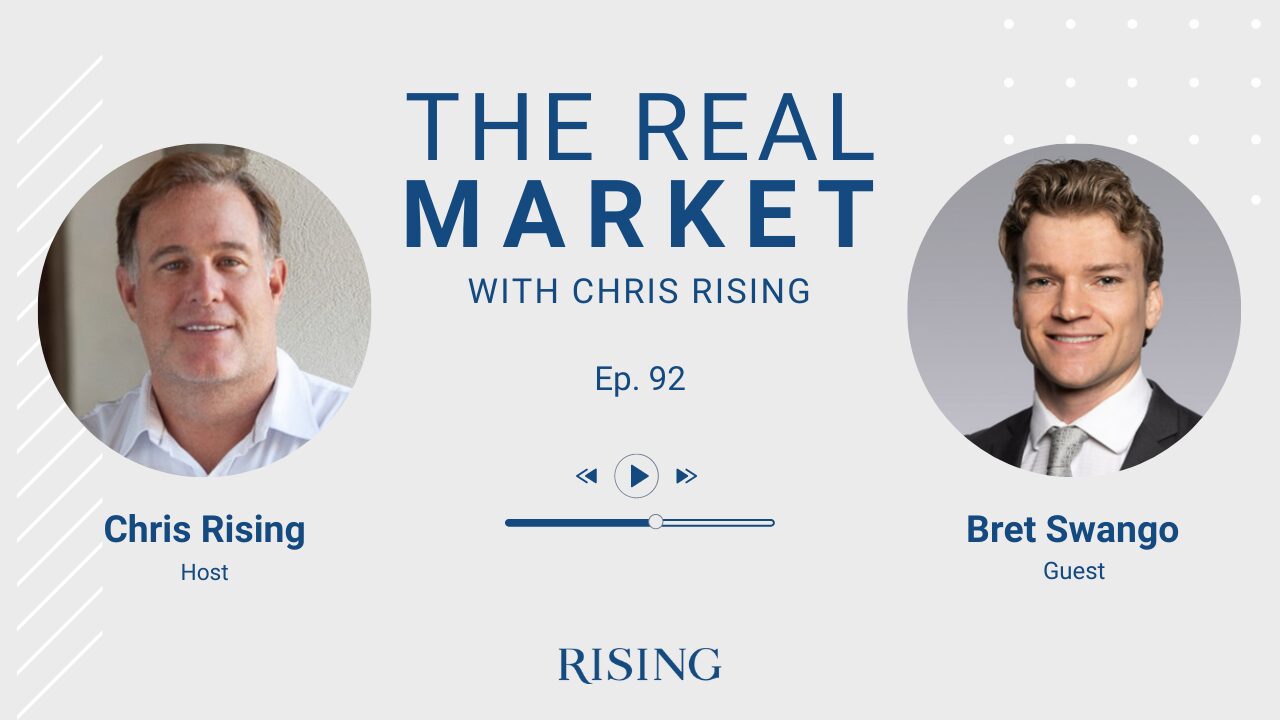
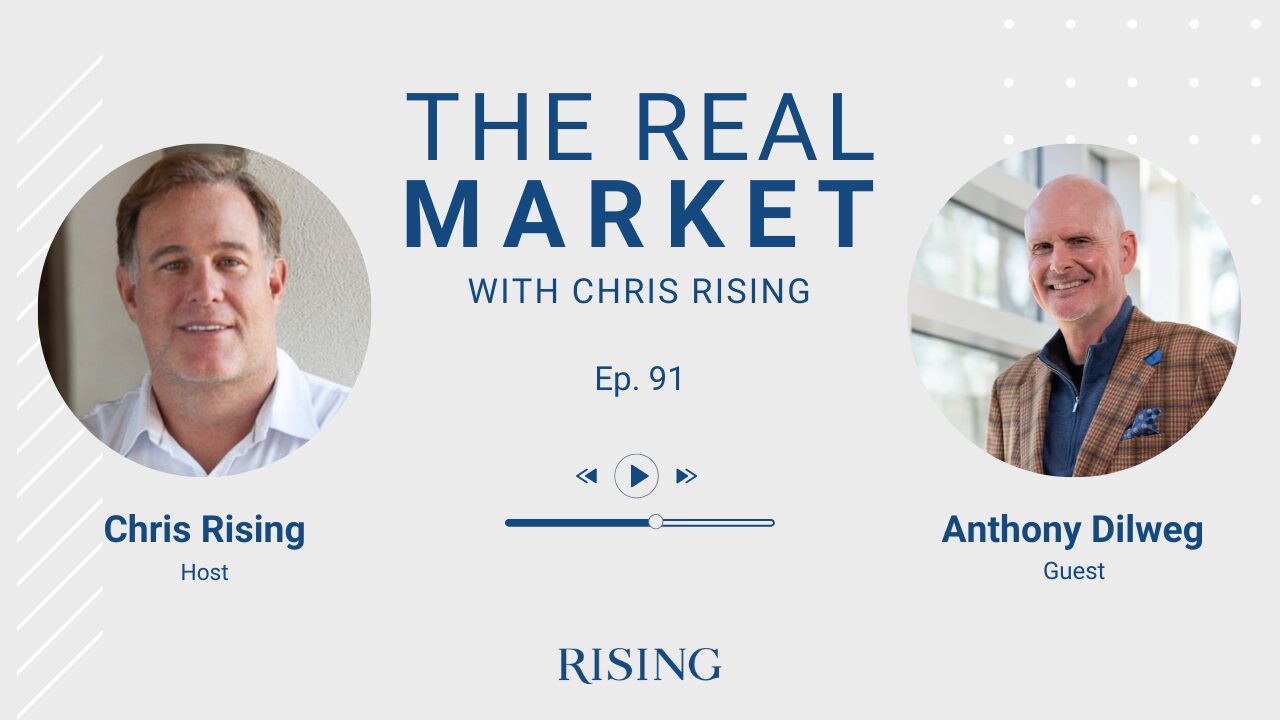
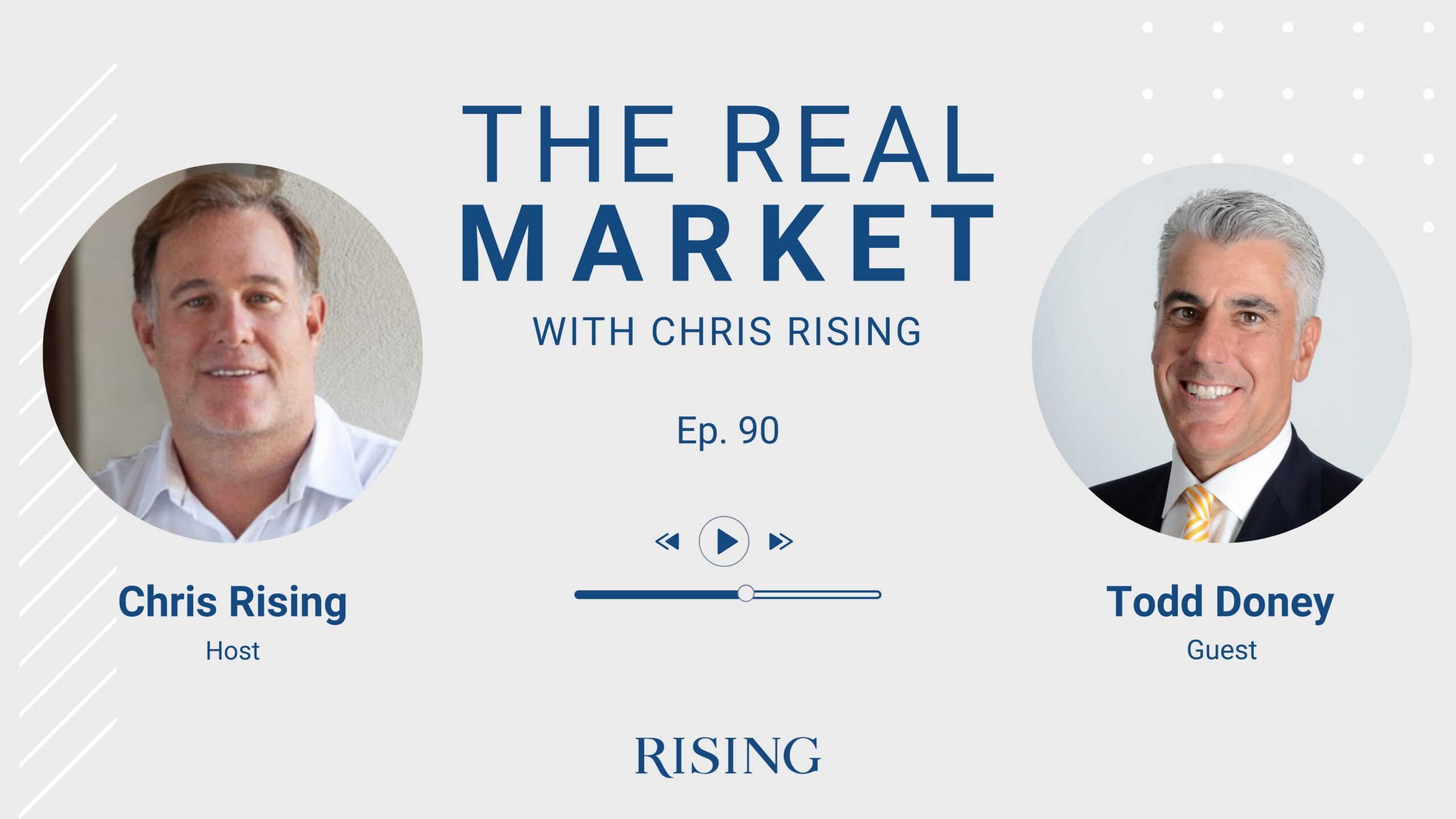
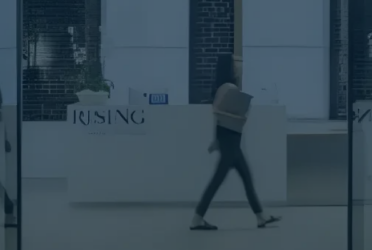
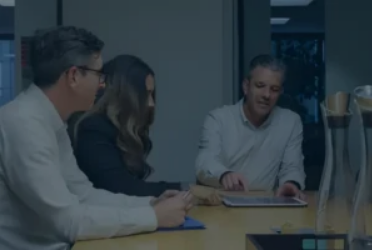
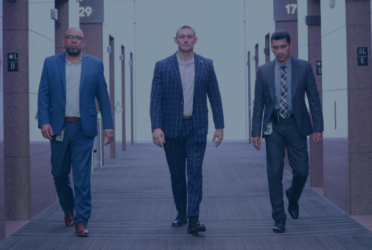
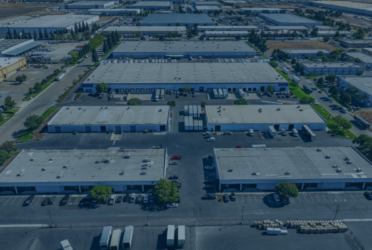
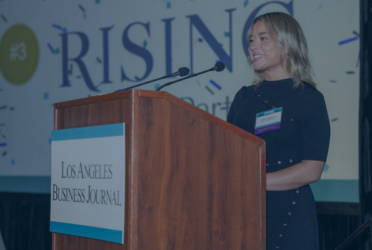
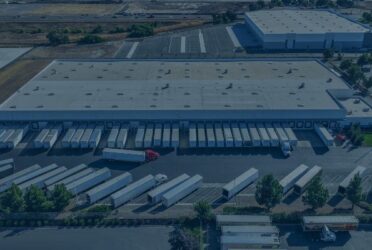
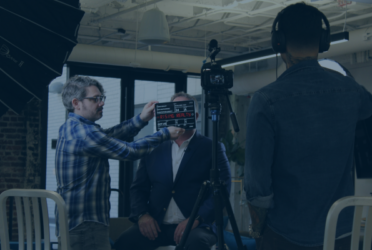
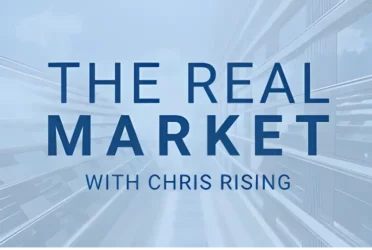 Podcast
Podcast